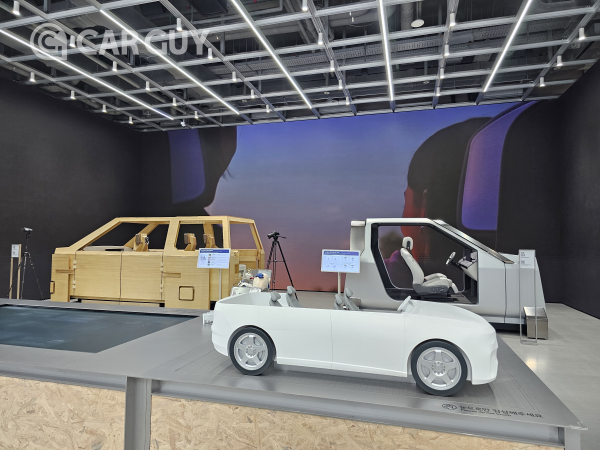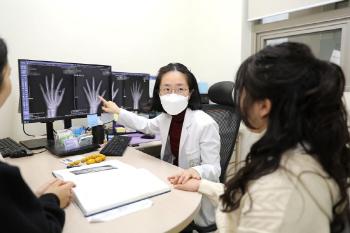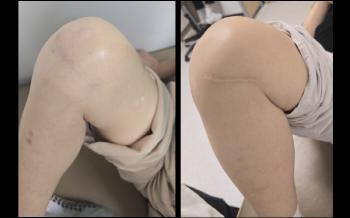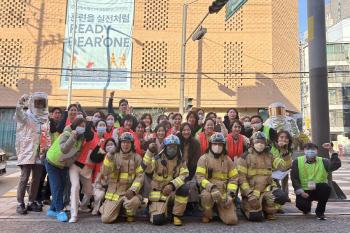Mobility User Experience Becomes Important..Why Hyundai Kia UX Studios Opened in Seoul
|
This is a complete refurbishment of the existing 'UX Studio', which opened in Seocho-gu in 2021, and will enter Gangnam-daero's office building, which is easy to access customers, to more effectively convey the core values of the mobility user experience (UX) pursued by Hyundai Motor and Kia.
The existing 'UX Studio' was an in-house collaboration platform used by researchers in charge of Hyundai Motor and Kia's products, design, and design in the vehicle UX development process. User surveys, which are the core of UX research, have also been privately operated by inviting some specific customers.
The biggest change in 'UX Studio Seoul', which has been refurbished, is that it has become a research platform that provides an open space for any customer to participate as a subject of mobility development. Visitors can freely experience the future mobility environment through various contents at UX Studios, participate directly in the preceding UX research process, and experience the process of reflecting user opinions in the product during the vehicle development process.
Many automakers are also conducting various forms of customer research, but UX Studio Seoul is the world's first systematic and constant research platform where general customers actually participate in the vehicle UX development process and provide feedback.
The opening of Hyundai Motor and Kia's "UX Studio Seoul" is aimed at innovating the user experience one step further amid the paradigm shift of future mobility such as electricity and autonomous driving, while providing brand-specific value in all aspects that customers feel using mobility, such as design, driving performance, infotainment system, and convenience specifications.
"UX Studio Seoul" is largely composed of "Open Lab" on the first floor, where you can experience UX exhibition contents and participate in research, and "Advanced Research Lab" on the second floor, an immersive UX research space.
Hyundai Kia operates a permanent program in which a professional guide explains major contents by space for visitors to experience the exhibition smoothly and participate in research. Detailed introductions and program reservations can be found on the UX Studio website (※ Link: https://www.hyundai.co.kr/uxstudio)
The UX that Hyundai Motor Group is aiming for is to provide a moving experience beyond convenience, said Kim Hyo-rin, managing director of Hyundai Motor and Kia Feature Strategy Office. "The starting point is ultimately the voice of customers, and UX Studio Seoul will not be a simple experience space, but a space that captures customers' voices in the actual vehicle development process."
■ Mobility User Experience and Exhibition Space, UX Studio Seoul 'Open Lab'
The first floor of 'UX Studio Seoul' is 'Open Lab', an open experience space for customers, and there is a ▲UX test zone ▲SDV zone ▲UX archive zone. Customers can look at UX research processes and participate directly in research, as well as experience software defined vehicles (SDV) based future mobility technologies.
○ UX test zone
The UX test zone is a space to help visitors understand the mobility UX research process and consists of ▲UX Insight ▲ UX Concept ▲ UX Verification Zone. You can experience how the UX concept of Hyundai Motor and Kia is developed, implemented, and verified sequentially.
The various behavioral data that customers show through their experiences in the UX test zone will be an important factor that will be directly reflected in future vehicle development.
First, in the UX Insight area, you can check the overall UX research process through the contents of the large display. You can experience models that reflect various UX concepts such as doors, seats, and moving consoles, and leave visitors' ideas on mobility user experiences.
Next, in the UX concept area, a study buck made of wood is implemented. Inside, you can see various UX concepts such as vehicle space configuration, seat and storage functions, and mobile console, and you can experience UX applied to the vehicle with an immersive experience through VR devices.
Finally, in the UX verification area, driving simulation can be experienced through a verification buck. The virtual driving environment is displayed on the front LED wall, and you can try various devices as in the actual driving situation by boarding the verification buck. In particular, eye-tracker can be used to collect driver's gaze data to derive usability indicators according to functional behavior and gaze dispersion, and test results can be verified.
○ SDV Zone
SDV zone is a space where you can experience key hardware and software technologies to realize Hyundai Motor Group SDV.
The SDV zone displays electrical & electronic (E&E) architecture exhibits first unveiled at the developer conference 'Pleos 25' held in March. E&E architecture is a design method that integrates controllers into high performance vehicle computers (HPVC) and zone controllers based on hardware and software decoupling (decoupling) structures.
The introduction of the E&E architecture not only reduces the controller by about 66% compared to the traditional vehicle architecture, but also reduces the wiring harness to reduce system complexity and reduce weight. At the same time, continuous updates provide the basis for maintaining up-to-date vehicle status at all times.
In addition, in the SDV zone, you can operate various functions by boarding an SDV testbed vehicle equipped with Hyundai Motor Group's next-generation infotainment system 'Pleos Connect'.
Pleos Connect is an AAOS (Android Automotive OS)-based infotainment system that features enhanced connectivity between mobile and vehicle. It is designed to allow customers to use familiar mobile experiences naturally in vehicles, and can easily control infotainment functions with voice through the context-aware voice assistant "Gleo AI."
○ UX Archive Zone
The UX Archive Zone is a space that records the history of Hyundai Motor and Kia's user experience, and a special exhibition will be held under the theme of the five senses of the human body to communicate from the driver's point of view.
The first exhibition theme is 'Visual Experience', which displays changes in information delivery devices such as clusters and center fascia of Hyundai Kia and introduces the evolution of technology to secure a wide and pleasant view such as HUD and digital side mirrors.
■ Immersive Research Space, UX Studio Seoul 'Advanced Research Lab'
The second floor of "UX Studio Seoul" is an "Advanced Research Lab" and consists of ▲UX canvas and feature development room ▲ simulation room ▲UX lounge and vehicle exhibition space. It is an immersive space where Hyundai Motor and Kia researchers and pre-recruited users conduct UX research together.
○ UX Canvas and Feature Development Room
UX Canvas is a place where researchers and customers share various ideas and are used for various purposes such as workshops and seminars.
The feature development room is a research space segmented by each field, such as autonomous UX, high-performance vehicle UX, and human machine interaction (HMI). It is a place where the practical work of UX researchers is carried out, and it is characterized by a variable configuration so that UX concepts can be quickly developed and verified around specific themes. This place is not always open to customers, and only users pre-recruited for research participation can visit.
○ simulation room
The simulation room is also a research-only space that is not always open, and it is a space that verifies the UX concept derived from the UX canvas and feature development room in a virtual environment. You can check in detail how the developed UX concept shows usability when driving and what needs to be improved based on data.
The simulation room has a variable test buck that can transform from a subcompact sedan to a large SUV, a 6-axis motion simulator that closely simulates vehicle movement, and a large curved display with a viewing angle of 191 degrees implemented with 730 LED modules to create an evaluation environment similar to that of actual driving.
In particular, simulation software provides a more immersive driving environment as virtual environments are implemented based on actual maps of major cities around the world, such as Seoul, San Francisco, USA, and Delhi, India. In addition, the global famous motor racing circuit is also built-in, allowing the UX of high-performance vehicles to be evaluated.
During simulator operation, the driver's behavior and driving data are acquired through the camera and sensor installed inside the buck and then stored in the database. Hyundai Motor and Kia plan to actively utilize accumulated user data in the UX research process and continue to develop innovative mobility experiences based on this.
○ UX Lounge
UX Lounge, like the 'Open Wrap' on the first floor, is a customer-open space and the point where the guided tour is completed. It is a space where visitors can freely communicate and relax by watching Hyundai Motor and Kia's new cars on display or using robot cafes.
Meanwhile, Hyundai Motor Group is listening to consumers' diverse opinions to realize a more enjoyable and comfortable travel experience while speeding up the SDV transition. As part of the effort, it has established global UX studios in Shanghai (China), Frankfurt (Germany), and Irvine (US) in addition to Seoul, and is researching and developing UX concepts that reflect feedback from real users in each region.
Editor Song Moon-cheol mc.song@carguy.kr
This article was translated by Naver AI translator.




